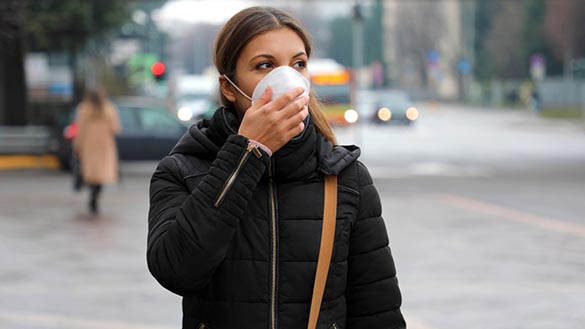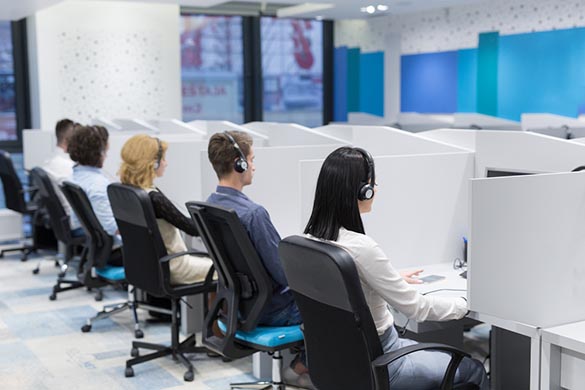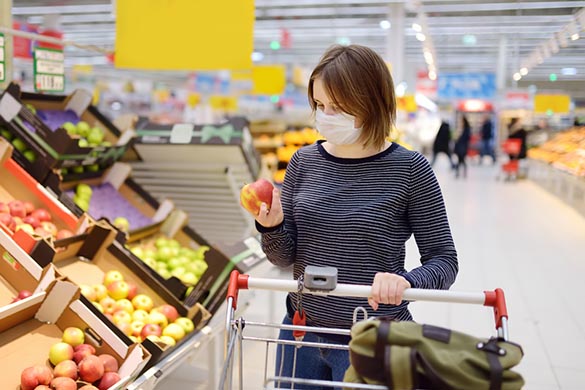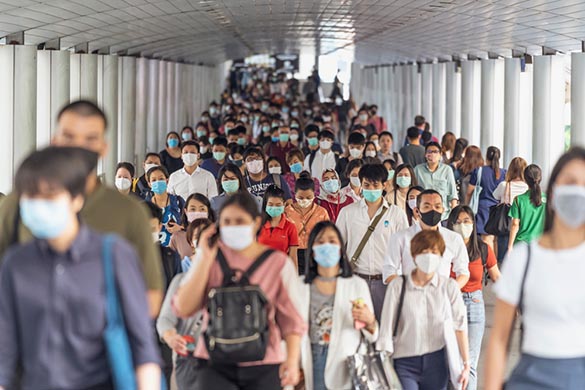![The-Most-Dangerous-Places-For-COVID-19[1]](https://thelifepilot.com/wp-content/uploads/2022/11/The-Most-Dangerous-Places-For-COVID-191.jpg)
For the last three months or so the world has been in a near state of perpetual lockdown as most of the world was trying to come to grips with the worst pandemic in over a hundred years. And, as the rate of infections and deaths from the novel coronavirus began to increase in certain hotspots around the globe it seemed like it might never end. Still, being that this virus was new and the full extent of what it could do was still being assessed and still is to this day, governments around the world have had to figure out just how we could prevent a complete meltdown of all of our various economies. This has led to some increasingly heated debates over whether or not it is more important to save lives or to keep our financial and economic systems from slipping into total chaos.
What needs to be fully understood is that the scourge of COVID-19 has brought about an economic calamity not seen in nearly a hundred years and, even though it is devastating many economies on every continent, it is hitting the U.S. Economy particularly hard. So, there is a clear imperative to find ways to keep the economy from falling off a cliff, even though many would argue that this has already happened. The point is that the deep damage that has been done needs to be stopped and reversed as much as possible. And, the argument cannot be one that is either choose a total and never ending shutdown or an immediate or total reopening.
Instead, the clear answer is that we must find more nuanced answers to our problems which dictate that we develop a plan which is based on data related to infection rates and contact tracing so that we can track and isolated those who become affected while continuing to find ways to let people get on with their lives and get back to something that resembles a normal way of life and allows people to sustain themselves financially and emotionally.
The Reopening Process We Have

If you are watching the news it is hard to avoid seeing that the plan we have right now is not really one plan but an ever growing set of plans being carried out across the various states. In some states those plans have been to let county and even local governments decide what to open, where to open, when to open and how to open. This is causing a lot of confusion among the average person and even many of the business people who are looking for guidance on exactly what the rules of the road really are. So, while this continues to sort itself out there are a few things that everyone needs to understand as they set foot back out into the world as it is today.
Protecting Yourself In The World Of COVID-19

It’s been well-established at this point that wearing a mask to protect yourself from airborne droplets is essential if it is at all possible that you might be in the presence of someone who is infected with the coronavirus. And we all know that keeping our distance and wearing gloves will help to prevent contact with droplets that may be in the air or on a surface that we could touch. But these precautions may not always be in place wherever you go in the outside world as we move forward. So, it is extremely important to know when and where you are most at risk.
One example that best illustrates this point is the case of a church choir that met during the early days of the spread in the state of Washington. This group of sixty or so people met for choir practice not knowing that there was one infected, yet asymptomatic, person in the group. Over the course of the two to three hour practice nearly fifty people became infected and four of them eventually died from the exposure.
Another example happened in Japan where a telephone call center was ravaged by the virus. In this case the call center’s layout had a lot to do with the fact that nearly all of the employees who worked on one side of the large open space were infected while nearly all of the workers on the other side of the room did not end up catching the virus. In this case there was a row of offices that acted as a partition between the two sides of the office.
Clearly, these settings and circumstances are things that we should all be avoiding at this point but it is important to understand exactly why so many people were infected.
The Church Choir Example

Numerous studies have been conducted which indicate that this setting was particularly dangerous in that you had a large gathering of people in close quarters and in a confined space. Still, the main factor here was that all or nearly all of those present were involved in the very human function that makes us all most susceptible to becoming infected – They were singing. Now, you may be asking why singing is so dangerous but, when you understand just how the virus is spread, it becomes quite obvious.
When someone talks they are expelling air to one degree or another. In the process this expulsion of air carries with it a certain amount of saliva or even mucus out of their mouths and even their nostrils. The louder they speak or sing, the more air they take in and expel and, with it, the more droplets they take in and expel. So, as one might guess, the act of singing or yelling is what produces the greatest amount of air and droplets passing into the air and being taken back into the mouth, throat and lungs. Add to that the close proximity in which these people were in and all while in a closed setting and it is easy to see why the virus was able to spread so rapidly and strongly.
The Call Center Example

As we pointed out, the Japanese call center was set up with a series of desks or cubicles in close proximity to one another. But, there was a cluster on one side of the large room which was separated by a row of offices from the cluster on the other side of the room. Again, we had the many of the same conditions as with the choir practice – a large group of people who were in a closed environment and in close proximity to each. And, again, those involved were there to talk a lot as part of their job. So, it is easy to see why one infected person would be able to infect so many of those that they were close to.
The difference in this scenario is that the infected persons were largely separated from the cluster of people on the other side of the strip of offices in between them. In the end, nearly all of the people on the one side of the office were infected while almost none of the people on the other side were affected at all.
Coronavirus Lessons

Being that this virus is novel and there is much to be learned about it and how it affects us, there are many lessons that we should all be learning as we move forward into this strange new world.
The first of these is that the real danger comes in the form of airborne droplets that we all put into the air and understanding that there is nothing we can do to stop that, we must all be cognizant of the fact that our first course of action is to wear a mask that will prevent those droplets from getting into the air where other people could come in contact with them. Doing this combined with keeping a safe distance of six to twelve feet has proven to greatly reduce the spread of the virus.
But, as we are now being encouraged or even, in some cases, forced to venture out and into situations where we are likely to be in close proximity to many others in our workplaces or in social settings there is no doubt that we will be increasing our exposure to the virus. So, the real question is how will individuals handle this situation and what will employers and business owners do to try to mitigate the spread.
Playing Defense Against COVID-19

Understanding all that we know about how the coronavirus is spread is the best weapon that anyone can have when it comes to protecting yourself against catching it. The key thing is to be aware of the situations that you will be walking into and decide whether or not it is really all that critical for you to be there. Yes, you may be forced into some situations or environments such as to work or to get groceries, and this is where you will have to decide how you protect yourself using masks, gloves and frequent hand washing.
When it comes to exposing yourself to others in situations that are not necessary it is best to step back, assess the risks and make a determination as to whether or not you really need to risk your health or your life to be there.
As we continue down this road the rules of the game may change and even change rapidly. This is largely dependent on whether or not we can do a far better job of identifying those who are infected and isolate them so that we can drop the curve of infections. Or, it may be that a treatment which can severely curtail the effects of the virus will become available while we wait for a vaccine that is proven to be safe and can be widely distributed.
Until that time comes each of us will have to determine just how much risk we are willing to take.






